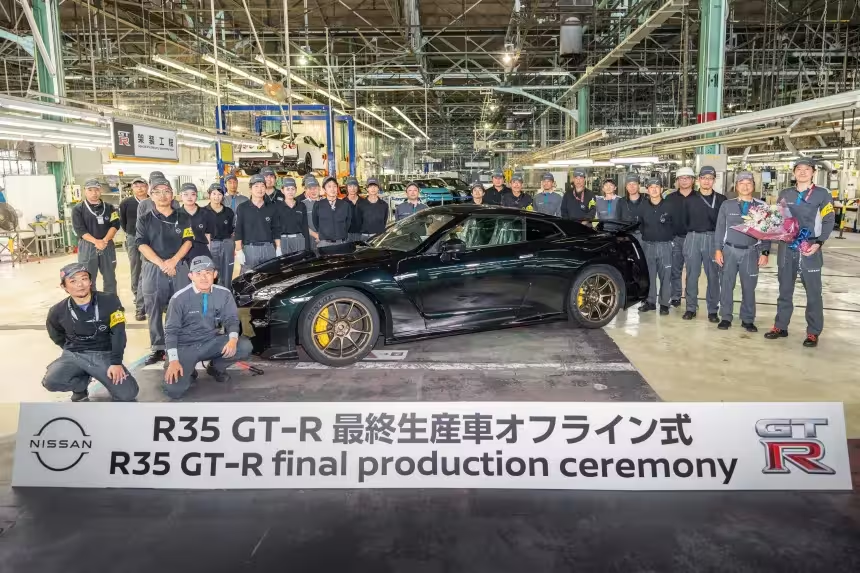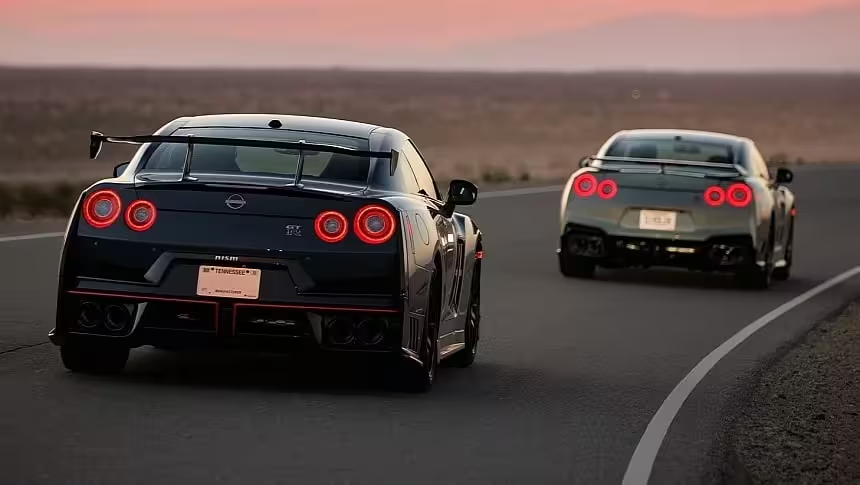5 Minutes
End of an Era: The R35 Nissan GT‑R Rolls Off the Line
The Nissan GT‑R has officially reached the end of its R35 chapter. After an 18‑year production run, Nissan confirmed that assembly of the iconic model has concluded at its Tochigi plant in Japan. Factory staff gathered to mark the occasion beside the final example: a Premium T‑Spec finished in Midnight Purple that will be delivered to a customer in Japan.
“After 18 remarkable years, the R35 GT‑R has left an enduring mark on automotive history. Its legacy is a testament to the passion of our team and the loyalty of our customers,” said Nissan President and CEO Ivan Espinosa. He added that this isn’t necessarily the final word for the GT‑R nameplate: Nissan aims to see the GT‑R return in the future.
Production Background and Platform
Introduced at the end of 2007, the R35 GT‑R was conceived as an attainable rival to established sports cars — often billed as a Porsche 911 contender that offered exceptional performance for the price. Built on Nissan’s Premium Midship platform, the R35 combined a front mid‑engine layout with all‑wheel drive and a 2+2 seating configuration under a fixed roof, delivering a driver‑focused package with everyday usability.

Engine, Assembly and Performance
All R35 variants were powered by the hand‑built VR38DETT twin‑turbo V6. Each engine required roughly six hours to assemble and was produced by a small, dedicated team — a manufacturing tradition that contributed to the GT‑R’s reputation for precision. When the model first launched, the VR38DETT was rated at 473 hp (480 PS / 353 kW). From the 2017 model year onward output was increased to 562 hp (570 PS / 419 kW), and performance‑focused Nismo models offered around 592 hp (600 PS / 441 kW).
For markets such as the U.S., the 2024 lineup delivered 565 bhp (573 PS / 421 kW) across the Premium, Skyline Edition and T‑Spec variants, while the Nismo topped out at 600 bhp (609 PS / 448 kW). The sportier T‑Spec and Nismo trims were fitted with carbon‑ceramic brakes, whereas Premium and Skyline Edition used a Nissan/Brembo system. Fuel economy across the range was broadly similar: roughly 18 mpg combined, 22 mpg highway and 16 mpg city (13.1 / 10.7 / 14.7 l/100 km, respectively).
Design, Chassis and Interior
Visually the R35 evolved over its life cycle with subtle but purposeful updates: aerodynamic tweaks, refined bumpers and distinct trim for top‑end variants. The Nismo received a more aggressive chassis setup, upgraded suspension tuning and interior changes focused on driver engagement — including unique seats and trim touches. The T‑Spec combined performance hardware with limited‑edition styling cues, creating strong appeal for enthusiasts and collectors.
Market Positioning and Pricing
Despite production ending, Nissan still listed the GT‑R on its U.S. site for the 2024 model year, with limited availability across trims: Premium AWD, Skyline Edition AWD, T‑Spec AWD and Nismo AWD. Pricing reflected the GT‑R’s performance pedigree — the base Premium began at about $121,090 MSRP, mid‑spec variants started near $131,090 and $141,090, and the top Nismo grade carried a starting price around $221,090 (excluding a $1,895 destination charge).

Comparisons and Legacy
Over its lifecycle the R35 set a benchmark for high‑performance, driver‑centric engineering at a relatively competitive price. It competed with established European sports cars by delivering exceptional lap times, AWD traction and a tunable powertrain. While the R35 era has ended, the GT‑R’s influence on Nissan’s performance strategy and on the broader sports‑car market remains clear, and the company’s statements suggest the GT‑R badge could one day be reborn in a new form.
What to Expect Next
With R35 production wrapped, attention will shift to collectors, the remaining limited inventory, and speculation about a future successor. Whether Nissan pursues electrification, hybridization or a new interpretation of the GT‑R ethos is still open — but the R35’s legacy of innovative engineering, the hand‑built VR38DETT V6 and the model’s role as a high‑value supercar will remain part of automotive history.
Source: autoevolution


Leave a Comment